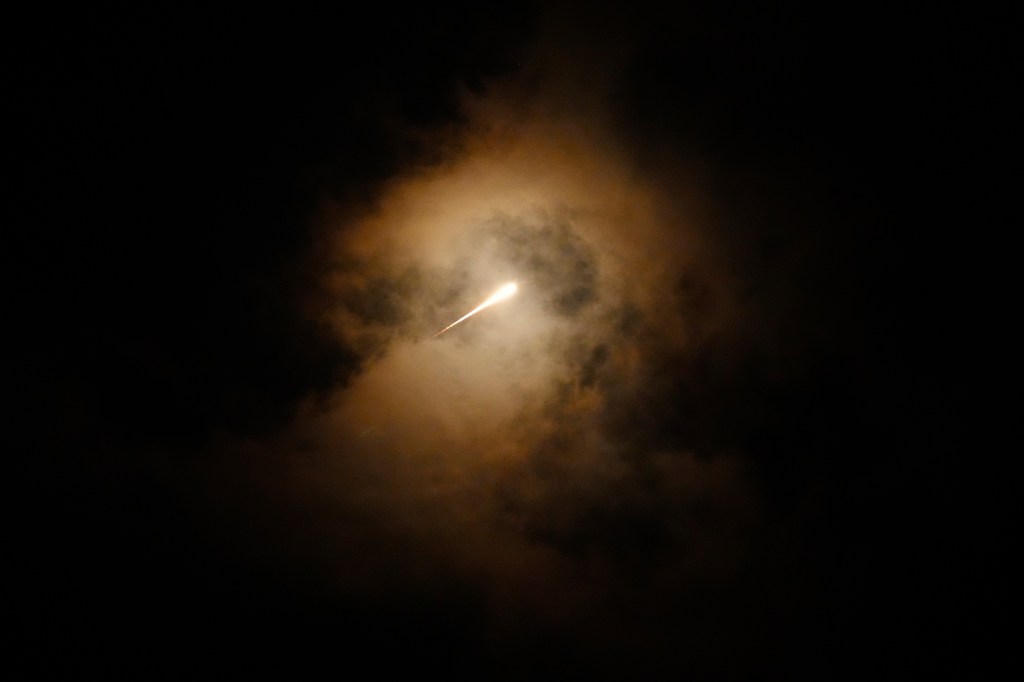
We are at a dangerous precipice in the Middle East. Richard Haass, former president of the Council on Foreign Relations, told me Wednesday that it felt like we were at a “turning point” in the region. Thomas L. Friedman of the New York Times was more alarmist: It is a “Code Red Time” he wrote.
But even before Israel’s campaign against Hezbollah, and Iran’s vast ballistic-missile retaliation, I was constantly asked how likely it was that the Middle East would be plunged into a regional war. Now as then, the short answer is that nobody knows. But the potential for a wider kinetic conflict hasn’t been greater in decades.
What would a true regional war in the Middle East look like? How might it specifically unfold — in the air, at sea and on land? And would the United States inevitably be drawn into the conflict?
In the year since the horrific Hamas terrorist attacks on Israel, we have been in an intractable cycle of violence and military escalation between Israel and Iran (and its proxies). The next move in this deadly pas de deux will likely be a strong response by the Israelis to last week’s Iranian missile assault.
Despite the lack of mass casualties, many senior Israeli leaders are vowing — in the words of Prime Minister Benjamin Netanyahu — to make Iran “pay for it.” This could include long-range air strikes, over roughly 1,000 miles of contested air space, against the most vulnerable elements of Iran’s nuclear program (which is deliberately scattered across that vast nation).
Doing so would require a complex ballet of loading GBU-57 “bunker buster” bombs on adapted F-15 Strike Eagle aircraft, and tricky in-flight refueling. The Israelis would have to hit many sites; 21 have been disclosed to the International Atomic Energy Agency, including Natanz, Fordow, Arak and Parchin. And there are certainly undisclosed locations. Such an aerial assault would require dozens, if not a couple of hundred, aircraft. Some of the nuclear facilities are more than 300 feet underground.
The air armada would also need dedicated fighter aircraft like the F-35, and electronic-warfare jets as well. Permission to overfly regional countries would not be forthcoming, meaning the Israeli Defense Forces might have to deal with third-party interference from Syria, Turkey, Iraq or Azerbaijan. Iran’s Russian-supplied S-300 air defenses, and its Cold War-era MiG-29 and F-14 fighters, are not formidable, but would complicate any strikes.
More ballistic missiles
If Israel proceeds with air attacks, the Iranian response would be significant. Hezbollah would undoubtedly be ordered to launch as many surface-to-surface missiles as possible. Perhaps a third of the pre-conflict arsenal of 130,000 had have been fired or destroyed by Israel in recent weeks. But if just half the remaining rockets were sent in waves toward Tel Aviv, Haifa, military installations, Mossad facilities and political centers in Jerusalem, the damage and civilian casualties would be substantial — even given Israel’s strong air defenses.
In addition, an Israeli attack on Iran might cause Hamas to execute the remaining hostages it holds from the Oct. 7 assault. Terrorists could also attempt many isolated attacks inside Israel, like the killing of seven and wounding more than a dozen Israeli civilians early this week in Jaffa. The Houthis in Yemen could also step up their long-range missile attacks.
But the main threat is a reciprocal Iranian ballistic-missile strike on Israel far more forceful than Tuesday’s. An attack with a majority of the 3,000 ballistic missiles in the Iranian inventory would overwhelm Israeli air defenses; the country’s hospitals would be flooded with the wounded. While the quality of Iranian maintenance and targeting is questionable, quantity can make up for a lot of misfires and defects.
Simultaneously, Iran would likely launch drone strikes — staged by Iranian Shiite militias in Syria or western Iraq — at covert Israeli nuclear facilities and at the IDF’s air force. These would be likely coupled with significant cyberattacks.
The Iranian Navy, while hardly a powerhouse, could attack Western shipping and, above all, seek to close the Strait of Hormuz. This would require the use of mines, small speedboats and submarines: Iran has that equipment and routinely trains for this mission. The resulting disruptions in the flow of oil and gas could devastate the global economy.
Significant ground operations are unlikely — at least initially. Iran has one million troops under arms, about two-thirds on active duty. It has a young population of nearly 90 million from which to draw more forces, and can count on a number of militia allies in Syria and Lebanon. Could they mount a ground attack on Israel, likely through southern Iraq and Syria? Hard to pull off, but not impossible.
An alternative strategy
The United States would almost certainly be pulled into a full-on war between Israel and Iran. The Israelis would want significant combat support: the highest-grade intelligence from surveillance aircraft and satellites; cyberwar assistance; advanced munitions; aerial refueling.
The Arab states would try to maintain neutrality — although they would of course welcome a degradation of Iranian proxies and military capability. Turkey would be a wild card, but probably would not allow either side transit or access to Turkish bases.
















































